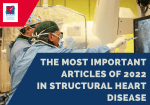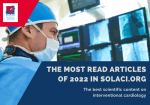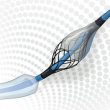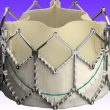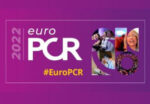This study compared fractional flow reserve (FFR) vs. angiography to guide the angioplasty of non-culprit vessels in patients with acute coronary syndrome (ACS) and multivessel disease. Landmark studies such as COMPLETE, COMPARE-ACUTE and DANAMI-3-PRIMULTI have demonstrated the prognostic value of revascularization (after treatment of the artery responsible for the ACS) of non-culprit arteries with respect<a href="https://solaci.org/en/2023/01/25/frame-ami-ffr-vs-angiography-of-non-culprit-vessel-in-acs/" title="Read more" >...</a>
Non-ST Elevation MI: How Long Do We Have for A Coronary Angiography?
This summary discusses the early invasive strategy and the risk of mortality in non-ST-elevation AMI. Over the past 2 decades, mortality and complications rates have seen a significant reduction thanks to technological and pharmaceutical development, and the increasing experience of health teams. This is especially true when we look at the use of coronary angiography<a href="https://solaci.org/en/2023/01/20/non-st-elevation-mi-how-long-do-we-have-for-a-coronary-angiography/" title="Read more" >...</a>
Intervention in Patients with Takayasu Arteritis: Rescue Therapy or an Alternative Complementary to Immunosuppressive Therapy?
Takayasu arteritis (TAK) is an uncommon granulomatous large-vessel vasculitis that affects the aorta and its primary branches. The most frequently types of observed vascular compromise are obstructive lesions, and aneurysmal vascular lesions or dissections. In 2021, the American College of Rheumatology recommended not to implement percutaneous intervention (PI) with these patients and only use immunosuppressive<a href="https://solaci.org/en/2023/01/18/intervention-in-patients-with-takayasu-arteritis-rescue-therapy-or-an-alternative-complementary-to-immunosuppressive-therapy/" title="Read more" >...</a>
The Most Important Articles of 2022 in Structural Heart Disease
Discover the most read scientific articles on interventional cardiology of 2022 in our website. We Should Treat Significant Stable CAD in Patients Undergoing TAVR Aortic stenosis is associated to significant coronary artery disease (CAD) in nearly 50% of cases. When we decide to treat aortic disease using surgery, it has been established we should also treat<a href="https://solaci.org/en/2023/01/12/the-most-important-articles-of-2022-in-structural-heart-disease/" title="Read more" >...</a>
Interventional cardiology: the most read articles of 2022 in solaci.org
Discover the most read scientific articles on interventional cardiology of 2022 in our website. The FDA Approves Intravascular Lithotripsy for Calcified Lesions The US Food and Drug Administration (FDA) has cleared the shockwave lithotripsy system to treat severely calcified plaque lesions. Is Epinephrine Superior to Adenosine in No-REFLOW? In patients with acute coronary syndrome, no-reflow prevalence is 32%. Different drugs—such as adenosine, verapamil,<a href="https://solaci.org/en/2023/01/05/interventional-cardiology-the-most-read-articles-of-2022-in-solaci-org/" title="Read more" >...</a>
Edge-to-Edge Repair Reduces Hospitalization and Mortality Rates in Secondary Mitral Valve Regurgitation?
Severe secondary mitral valve regurgitation is associated to hospitalization and mortality. The COAPT study has shown the superiority of guideline directed medical therapy at maximal tolerated doses according to guidelines (GDMT) plus edge-to-edge transcatheter repair (TEER) versus GMDT alone. However, at present there is no information on the impact of hospitalizations and their relationship to<a href="https://solaci.org/en/2022/11/22/edge-to-edge-repair-reduces-hospitalization-and-mortality-rates-in-secondary-mitral-valve-regurgitation/" title="Read more" >...</a>
Opening Ceremony SOLACI-SOCIME 2022
✔️ Opening Ceremony SOLACI-SOCIME 2022 ✔️ SOLACI-SOCIME 2022 Scientific Session 👨‍🏫 Content: 00:09 – Welcoming words – Dr. Guering Eid-Lidt (MEX) 01:41 – Fully understanding our TAVR implantation views and techniques – Dr. Ole de Backer (DNK) 21:51 – Transcatheter interventional heart failure therapies – Dr. Juan Granada (USA) 43:17 – The revolution in the<a href="https://solaci.org/en/2022/09/15/opening-ceremony-solaci-socime-2022-2/" title="Read more" >...</a>
Balloon expandable vs Self-Expanding Valves: The Best Option for ViV-TAVR in Small Annuli
TAVR has consolidated as an increasingly valid alternative to treat failed surgical aortic valve bioprostheses. One of the major challenges it presents is patients with small annuli treated with a surgical bioprosthesis. There is little data available about this scenario. A few observational studies have shown what appears to be a hemodynamic advantage of<a href="https://solaci.org/en/2022/08/23/balloon-expandable-vs-self-expanding-valves-the-best-option-for-viv-tavr-in-small-annuli/" title="Read more" >...</a>
Surgical Bioprosthesis Deterioration: Is the Valve-in-Valve Technique a Good Option?
The use of surgical bioprostheses has significantly increased, and while they last 15 years or more, in cases where they fail (usually due to stenosis), the decision-making process is challenging. Transcatheter aortic valve replacement (TAVR) is a good alternative for this situation, although information on the subject matter is still scarce. Currently, the only available<a href="https://solaci.org/en/2022/08/18/surgical-bioprosthesis-deterioration-is-the-valve-in-valve-technique-a-good-option/" title="Read more" >...</a>
EuroPCR 2022 | GLOBAL SYMPLICITY Registry
The GLOBAL SYMPLICITY Registry is the largest study, with the longest followup, of real-world patients (real world data) presenting high blood pressure, treated with renal denervation. Time in Target Range (TTR), estimates the time a patient needs to control their blood pressure, and is an independent predictor of cardiovascular events. The aim of this registry,<a href="https://solaci.org/en/2022/05/23/europcr-2022-global-symplicity-registry/" title="Read more" >...</a>



